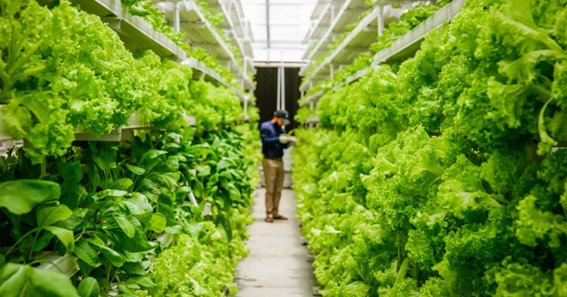Lovers of leafy greens rejoice- there’s a new way to get your fix. Introducing vertical farming: the latest, and perhaps greatest, innovation in agriculture.
In vertical farming, crops are grown in vertically stacked layers in a controlled environment. This means that farmers can grow more crops in a smaller space, using fewer resources. The practice is quickly gaining popularity in the UK and other parts of the world.
But is vertical farming profitable? Yes! Keep reading to find out why.
click here – Reasons to Construct Temporary Classrooms
Vertical Farming Produces High Crop Yields
Thanks to the controlled environment that crops are grown in, vertical farming systems typically produce high yields.
In conventional farming, crops are subject to the whims of the weather. If there’s a drought, for example, the crop yield will be lower. With vertical farming, the environment can be controlled so that crops always have the ideal conditions for growth. This results in higher yields and less wasted food.
There’s also the fact that vertical farming allows for year-round farming. You don’t have to wait for the right season to plant your crops. Ultimately, you get more harvests per year, which further increases your profits.
You Get to Enjoy Reduced Costs
Another reason why vertical farming is profitable is that it can reduce costs. As we pointed out before, farming uses a lot less land than traditional farming. You don’t need to worry about negotiating farmland leases or maintaining a large piece of property.
Pest control is also easier with vertical farming. Because the crops are grown indoors, there’s less of a risk of pests and diseases. This means you won’t have to spend as much on pesticides and other pest control measures.
Vertical farming also requires less water than traditional farming. According to some estimates, vertical farms consume 94 percent less water than conventional farming methods. The controlled environment of vertical farms allows farmers to recycle water and reuse it multiple times. This can result in significant savings in terms of water costs.
In addition, vertical farming isn’t as energy-intensive as traditional farming. The lack of need for large machinery, and the use of LED lighting, means that vertical farms have a smaller carbon footprint. This is good for the environment and can save you money on your energy bills.
click here – What is 150 of 60? Find 150 Percent of 60 (150% of 60)
Produce Commands Premium Prices
Finally, it’s worth noting that vertical farming often commands higher prices than traditional produce. This is because vertically farmed produce is often seen as being of a higher quality. It’s fresher, and it doesn’t have to travel as far to reach consumers.
What’s more, vertical farming allows for a greater degree of customisation. Farmers can grow crops to specific specifications, such as organic or non-GMO. These types of products often sell at a premium, further boosting your profits.
Start Vertical Farming Today and Enjoy the Profits
Farming methods have come a long way in recent years, and vertical farming is leading the charge. This type of agriculture offers a number of advantages over traditional farming, including higher yields, reduced costs, and greater flexibility. If you’re thinking about starting a farm, vertical farming is definitely worth considering.

